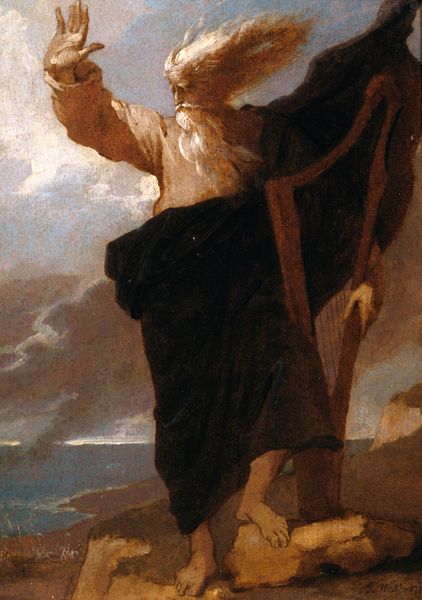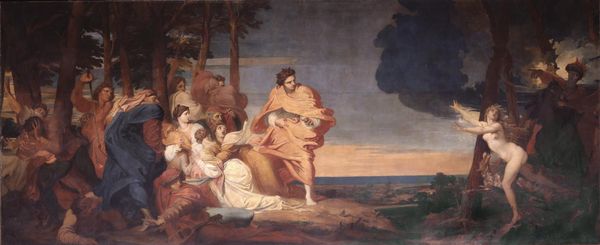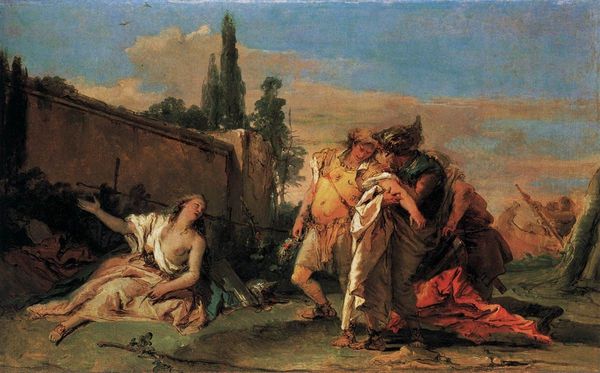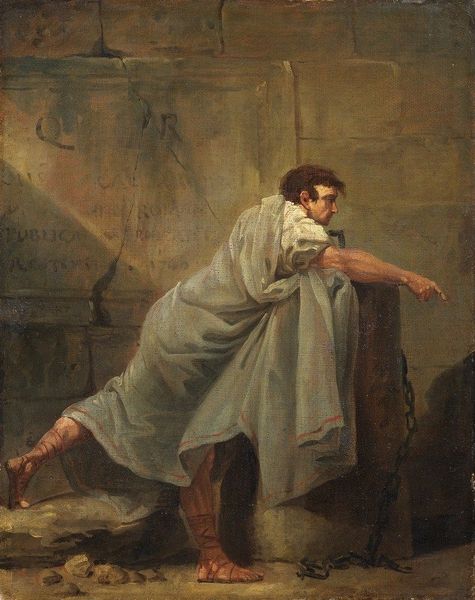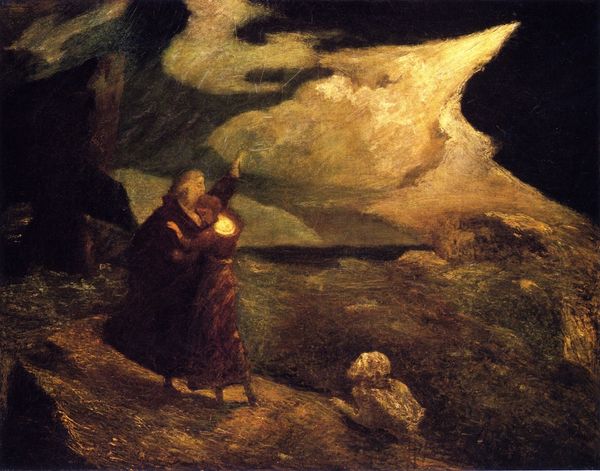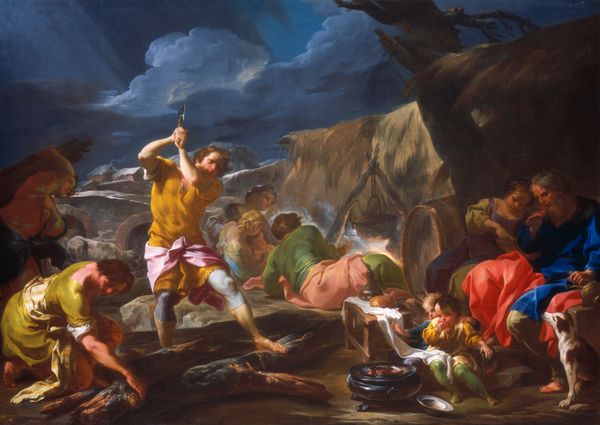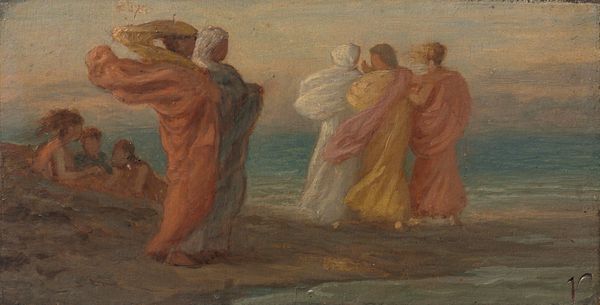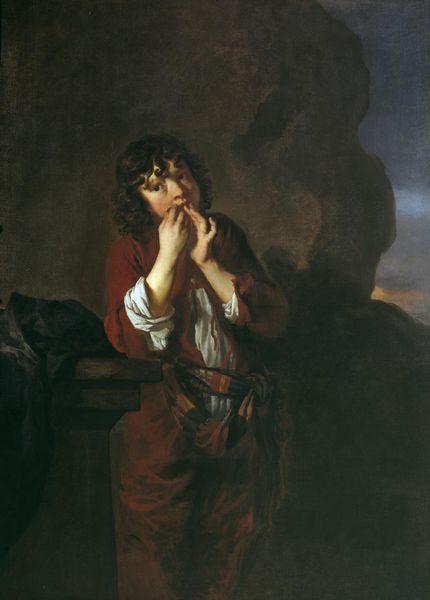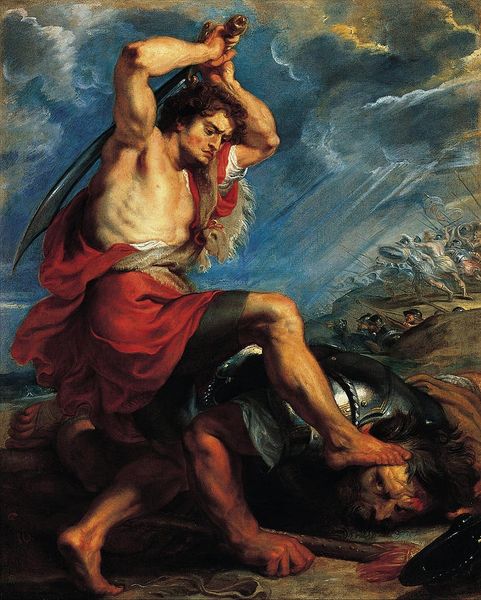
Dimensions: 47.3 x 37.5 cm
Copyright: Public domain
Curator: This is "Demosthenes Practising His Oratory," an 1870 oil painting by Jean Lecomte du Noüy. It captures a moment of solitary practice by the famed Athenian orator. What strikes you first? Editor: The starkness of the environment; the brown cape contrasts sharply with his light clothing and makes me focus on the textile’s quality. Its texture looks almost coarse. I also see the coastal backdrop – wind, sea, city. The relationship is key to the narrative. Curator: Indeed. This work encapsulates 19th-century romanticism through its valorization of the individual spirit and historical themes. We see Demosthenes, a man overcoming adversity to become one of history’s most influential voices. He stuttered as a boy and was humiliated publicly. This painting shows how he overcame his impediments, transforming social exclusion into political power. Editor: The repetition of texture and tone is what keeps my interest: between sand, sea, and garment there’s a focus on the conditions of labor that make rhetoric possible. What was it like to practice outside in a harsh environment with heavy wet clothing on? Rhetoric takes place in a specific place and is grounded in these very physical constraints. It isn’t only abstract ideas. Curator: Absolutely. It raises interesting questions. Does this image promote individual self-determination and perseverance, but also risks masking the social and material conditions required to attain influence? Did someone weave and dye the orators clothes and who benefitted from the work of preparing and maintaining the stagecraft? Editor: The social structure is there; it’s always behind even the most seemingly ‘natural’ scene. Du Noüy seems more interested in idealizing rather than historicizing, however, through that beautiful contrast between clothing textures against the wild environment he points towards its material basis. Curator: Perhaps. I find it inspiring how the artist uses a moment from the distant past to speak to the social and political challenges. Editor: It gives you a feeling that even this far back materiality and production of conditions for individuals such as orators require deep consideration and acknowledgement in understanding of both social and economic impacts from the past, the now, and the what the future may bring.
Comments
No comments
Be the first to comment and join the conversation on the ultimate creative platform.
